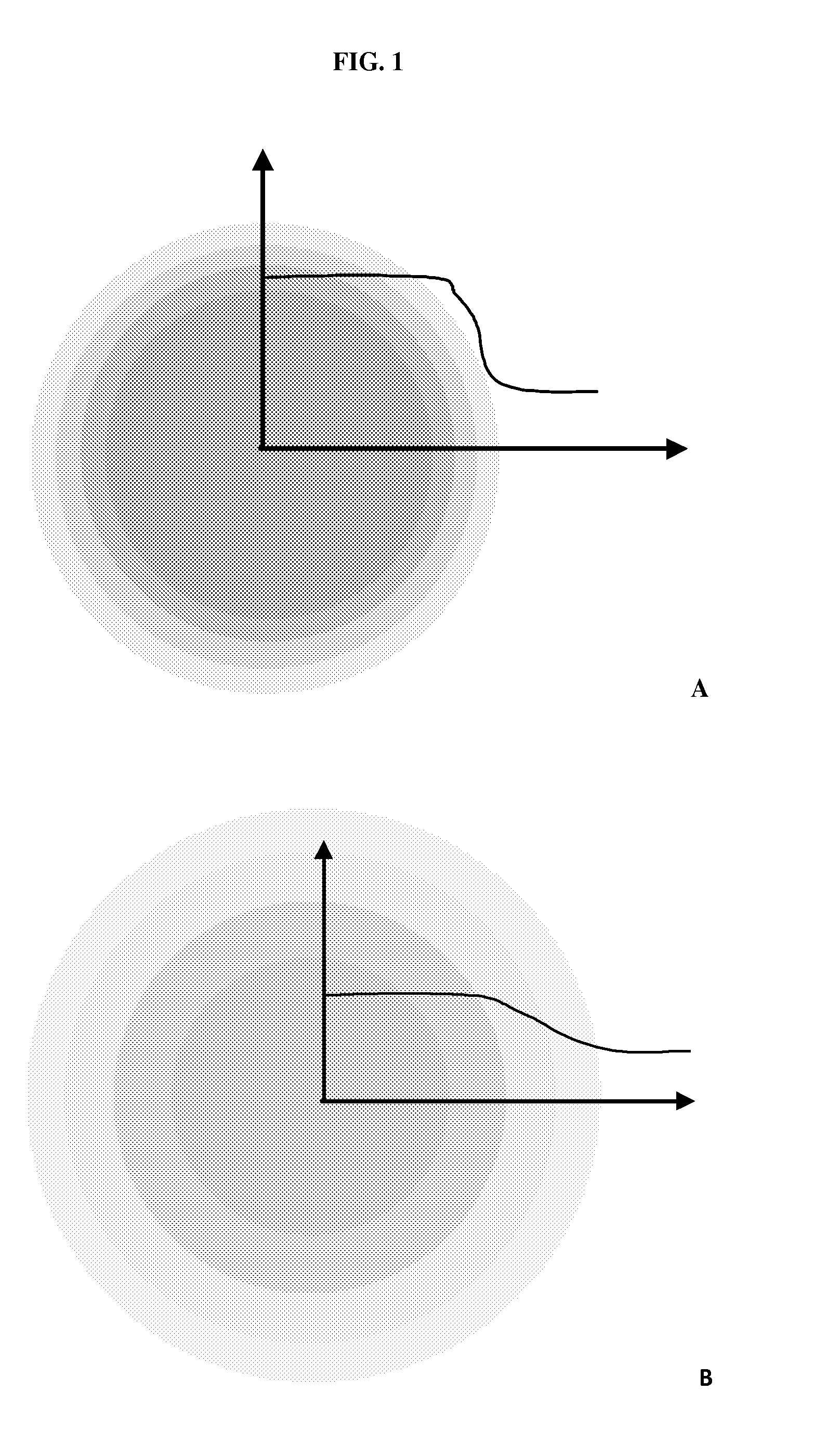Engineered crosslinked thermoplastic particles for interlaminar toughening
a technology of crosslinked thermoplastic particles and interlaminar toughening, which is applied in the direction of layered products, transportation and packaging, chemistry apparatus and processes, etc., can solve the problems of increasing the concentration of thermoplastic, poor environmental resistance, and uncrosslinked thermoplastic particles, so as to increase the toughness and damage tolerance of composite articles, reduce solvent sensitivity, and increase damage tolerance
- Summary
- Abstract
- Description
- Claims
- Application Information
AI Technical Summary
Benefits of technology
Problems solved by technology
Method used
Image
Examples
example 1
Method of Manufacturing Particles
[0131]Crosslinked engineered thermoplastic particles are produced in a emulsion process by dissolving the polymer, crosslinking agent, catalyst into a common solvent, which is immiscible with water. An emulsion is then created in water by using a non-ionic surfactant.
[0132]The emulsified particles are subsequently dried and cured so that the polymeric chains become chemically crosslinked and consequently insoluble forming a chemical 3D network.
[0133]The reacting conditions and the type and level of crosslinking agent will determine the final properties of the particles as described above.
[0134]When blended in a thermoset resin, once the resin temperature gets over a specific onset temperature (which is specific to the properties of the particles), the particles start to swell due to the absorption of the monomeric species. The absorbed monomers subsequently react in the particles during the regular cure of the resin.
[0135]This process results in ther...
example 2
Method Characterizing Particles
[0139]The crosslinked particles may be characterized by two major tests: the sol / gel fraction and the extent of swell in a monomeric epoxy resin.
[0140]The first test is a simple procedure that provides an estimation of the amount of chemically crosslinked polymer in the particles. A known amount of particles is mixed into a suitable solvent, i.e. dichloromethane in the case of PILT-100 particles, and filtered to determine the gel fraction of the particles. Typical values are found to be around 70%. Commonly, particles are found in the range 50-99%.
[0141]The second test measures the ability of the particles to absorb monomeric resin such as epoxy monomers. A standard procedure consists in observing the swell behaviour of a set of approximately 10 particles, blended in a low viscosity epoxy resin such as MY0510, whilst the resin is heated to high temperature. The diameter of the particles when fully swollen by the monomer is compared to the original part...
example 3
Comparison of Fracture Resistance (Toughening) with Elastic Modulus
[0143]The benefit of using particles with a gradient interphase is demonstrated in neat resins by evaluating the fracture resistance using Linear Elastic Fracture Mechanics (following the procedure recommended by the ESIS committee, “Fracture Mechanics Testing Methods for Polymers Adhesives and Composites,” D. R. Moore, A. Pavan, J. G. Williams, ESIS publication 28, 2001, pp 11-26). Neat resin samples (without fibres) are prepared by conventional hot-mixing techniques and cast into moulds for curing. KIC and GIC are measured on the neat resin using LEFM, elastic modulus is determined by compliance measurements.
[0144]The resins evaluated are detailed below:
TABLE 5Control 1MY051060% equivalentPY30640% equivalent44DDS80% equivalentHC99 0%PILT-100 0%
TABLE 6Control 2MY051060% equivalentPY30640% equivalent44DDS80% equivalentHC9930%PILT-100 0%
TABLE 7077-039BMY051060% equivalentPY30640% equivalent44DDS80% equivalentHC9915%PI...
PUM
| Property | Measurement | Unit |
|---|---|---|
| Molar mass | aaaaa | aaaaa |
| Fraction | aaaaa | aaaaa |
| Fraction | aaaaa | aaaaa |
Abstract
Description
Claims
Application Information
 Login to View More
Login to View More - R&D
- Intellectual Property
- Life Sciences
- Materials
- Tech Scout
- Unparalleled Data Quality
- Higher Quality Content
- 60% Fewer Hallucinations
Browse by: Latest US Patents, China's latest patents, Technical Efficacy Thesaurus, Application Domain, Technology Topic, Popular Technical Reports.
© 2025 PatSnap. All rights reserved.Legal|Privacy policy|Modern Slavery Act Transparency Statement|Sitemap|About US| Contact US: help@patsnap.com



